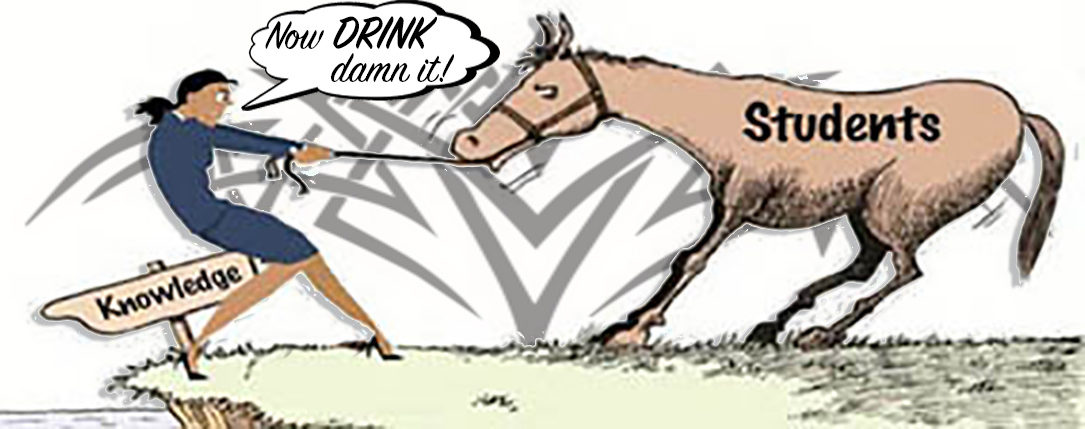Make Education Work For YOU!
August 22, 2020

Methods of education are changing. Facilitated by constrictions created by a novel coronavirus, many are adapting to a new model of how we teach and how we learn. In This new digital era, the burden on students to learn has never been greater. They will have to balance issues at home caused by the virus while being attentive, motivated, persistent and diligent in their schoolwork in a new setting.
In hindsight, the hours they’ve spent over the years playing video games and participating in social media have prepared them physically for the long online-learning sessions. They’re laser focused during game-time and thumbing like crazy to text and tweet, but that’s because they want to. It’s entertaining, and for many, their main source of socialization, so they willingly sit hunched-necked for hours staring at a screen. However, like with in-person learning, I see the hurdle online being whether they want to learn.
Think about a task you learned at your job. Was it taught by a co-worker, a company executive, by watching an online slide show, or during a training seminar? Do you remember it being engaging or exciting and thinking, “Man, this is great! I really want to learn this!”? Or was it something you viewed as boring and tedious, but you did it because you wanted to keep your job? Students in a classroom – in-person or at home – are no different.
As a career and technical education teacher I thought I would be teaching students who wanted to learn a trade. In 10 years, I’ve documented less than 10% of students work or continue their education in the graphic arts. So, in my class of 25 students typically two of them want to be there. For the rest, it’s like they’re sitting through a training seminar at a job.
Over the years I’ve noticed an increase in students desire to learn on their own schedule, expecting a response from me as if they were calling out to “Alexa.” They daydream when I demonstrate despite several interruptions to bring them back, and then ask “what are we doing” when I stop talking. It’s like a mental defense that triggers when the room gets quiet. They suddenly realize it’s time for them to work, but they don’t know what they’re doing because they haven’t been listening.
I see my job as informational — not entertainment — and I work to provide relevant instructions and projects to prepare students for their chosen careers. I’ll say, “Make a poster on a topic of your choice,” and if they want to do it they’ll elaborate on a subject they like and put forth the necessary effort. This should be entertaining, using their imagination to create something new. If they don’t want to, or if they’re only doing it to appease their parents, they will struggle with this and other projects, and through a multi-year program they’ll learn to dislike education and count the days until they get out of high school. They may have a plan, like to get a job in a different field, but if that’s the case they should have studied in that field. I counsel many students each year on choosing a career and continuing their education, whether it’s in the graphic arts or another career path. To all of them I stress one important factor:
Students have to make education work for them.
In high school students have more input in what they want to study than at any time previously. Through the choice of electives or full CTE programs, students can try different things to determine what they want to do with their lives. I’m not one of those teachers who believes their program is the most important thing in the world. The graphic arts provide many different career opportunities – from graphic design, advertising, printing, packaging, websites, etc. – but the students have to be interested and they have to want to do them.
CTE programs are hands-on, project-based subjects, but many are difficult to recreate in a digital environment. Watching someone does not replace doing it yourself. For instance, if you’re learning to bang out a dented car fender, cutting or coloring hair, performing CPR, welding, etc., there’s no adequate way to replace tangible learning with a YouTube video. I’m one of the fortunate few in that my program – graphic arts – is heavily based on computers and software. The majority of my hands-on tasks involve just a computer mouse and the students’ motivation and imagination, so I can continue my curriculum in an on-line environment.
Delivery methods aside, in the end the ability of a student to understand and master vocational and academic knowledge is predominantly based on their own effort. This challenge – embraced in student-centric slogans like, “Education is not received, it is achieved” – was my reason for starting this blog site (hence the name). The key to successful education is increasing the relevance of the curriculum along with the students’ understanding of the importance of learning and the desire to do so.



